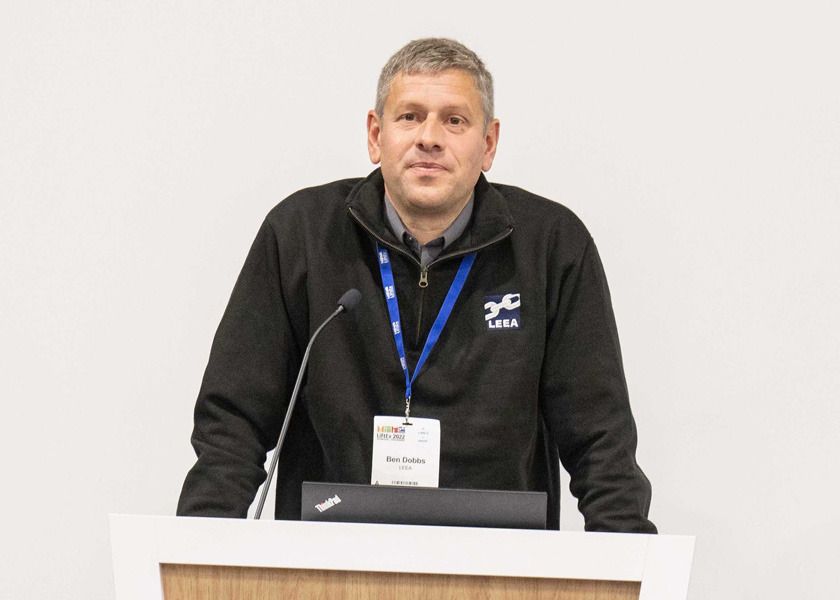
Preparing for the new Machinery Regulations
Ben Dobbs, Head of Global Standards and Legislation at LEEA, examines the upcoming changes between the Machinery Directive (MD) and the new Machinery Regulations (MR).
As many LEEA members will be aware, the current European Commission Machinery Directive 2006/42/EC is being converted into a ‘Regulation’, which contains some important changes that have real world implications for lifting equipment engineers.
Unlike a Directive, which has to be transposed into national law by each member state, a Regulation applies automatically and in identical terms across the EU. The new Regulation is expected to be formally approved in the middle of this year, and then fully replace the current Directive after 42 months – so late 2026 or early 2027. Some aspects will come into force earlier. These will be mostly preparatory work, such as the obligation on states to establish civil and perhaps criminal penalties to be applied in cases of infringement.
At present the UK government is not planning to change the UK’s Supply of Machinery Regulations in line with Europe, but we would urge practitioners to follow the new EU rules, not least because they create rather higher requirements in the quest for safety. And of course, for firms working in the EU, or with other countries or companies that follow the EU lead, adherence to the new Regulations will be mandatory.
The new Regulations provide a framework in which to address a number of issues that weren’t covered by the previous Directive, reflecting in particular advances in technology. So Artificial Intelligence, human-robot interactions and collaborative technologies are brought into scope, as are rules around software upgrades that may be downloaded well after the original supply of the machine. Under the new rules, a third-party ‘modifier’ of a machine, for example a supplier of new software, is under the same obligations as the original equipment manufacturer.
There are other important and welcome developments: for example, safety systems to be user-testable, and protected from interference from other systems to which they are physically or remotely connected, while control and logic systems, especially those designed for autonomous operation, must be limited so that they cannot exceed their defined safe operating envelope. Maintenance access must be designed to allow entry of rescue equipment should that be needed.
The development that may perhaps make the greatest contribution to saving lives is the explicit inclusion of the risk of contact with overhead power lines as an essential Health and Safety consideration. This is very welcome, but unfortunately there are aspects of the new Regulation (Annex 111, EHSR 3.5.4) that are not entirely clear and may be open to different interpretations.
Specifically, it would be helpful to have confirmation that ‘live overhead power lines’ is limited to power transmission into distribution networks (essentially, ‘cables on poles’) and doesn’t extend to power lines contained in trunking suspended below ceilings, cable runs embedded in above-ground walls, or otherwise well-protected.
Another slight obscurity is whether the rules apply to machinery that is expected to work under power lines, or more widely to any machines that might be expected to travel under power lines, even if they are unladen and merely travelling to or from their work site.
Phrases such as ‘where relevant’ are grist to the legal mill. We can only assume that if it could not reasonably be foreseen that the equipment would be operating near to overhead power lines, this case is not covered, or that it is enough for the manufacturer to warn that the equipment must not be used in this situation without actually changing the design of the machine. There may be other unconsidered situations that are ‘not relevant’.
Quite rightly, the Regulation is framed not to prevent contact or arcing, but to prevent the risk arising. That may require the operator to take action or responsibility (for example by ensuring that machine/load configuration is in ‘travelling’ mode), but this isn’t entirely clear. The Regulations also accept that the risk cannot always be fully avoided, but it is not clear whether that imposes an obligation to ensure that the operator cannot form part of a conducting path to earth in such eventualities.
Finally, the rules acknowledge that ‘taking into account the state of the art, it may not be possible to meet the objectives’ set up by the mandatory health and safety requirements and that equipment shall be designed and built ‘as far as possible’ with the purpose of achieving the objectives.
‘Where relevant’, ‘state of the art’, and ‘as far as possible’ provide fertile ground for lawyers: unfortunately this is generally after the serious or fatal incident has occurred. We are asking the standard-setting panel CEN TC 147 Cranes – Safety (of which I am a member) to seek clarification from the Commission on these arguable matters. The matter is of some urgency since the development of Standards in support of the Regulations needs to be starting now, but it seems unlikely that any ‘official guide’ to the Regulation will be available for some time.



